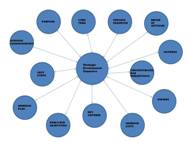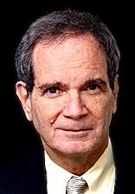
Strategic Development Sequence
The following outline represents a typical sequence for the development and application of a Plan to deal with a Stated Purpose, potentially ranging from a Formal Multi-year Strategic Plan to an Emergency Short-term Response. The sequence will be varied according to the primary reason for planning and the circumstance of those for whom the plan is being written. For the full Strategic Development Sequence visit our website under TRG Leadership Tools Archive.
This working sequence is part of the series of TRG business tools being posted to the TRG site weekly. Your recommendations and requests as to which new tools would be of value would be appreciated and may be sent to trginfo@regisgroup.com
WORKING SEQUENCE:
STATEMENT OF OVERARCHING PURPOSE
ESTABLISH CORE TEAM
SET OPENING SEQUENCE
CLARIFY RANGE OF OUTCOMES
IDENTIFYMETHODS
DEVELOP RANGE OF OPENING CIRCUMSTANCES AND PERCEPTIONS
SELECT “OWNERS” FOR EACH ELEMENT OF PLANNING
CREATE WORKING LISTS
SET KEY CRITERIA
DEVELOP FULL RANGE OF PROSPECTIVE GOALS AND OBJECTIVES
DRAFT AS A WORKING PLAN
DEVELOP NEXT STEPS
ONGOING COMMUNICATION
*Of what? By whom? To whom? How? When?
CONGRATULATIONS!
To Clint Good, AIA, President of Clint Good Architects, of Purcellville, Virginia, on winning the Distinguished Achievement Award from the Virginia Society of Architects, based upon his
championship of the “Sustainable Building Movement.” To visit Clint interview in the August “Agenda” click here.
|
The Regis Group, Inc.
102 North King Street | Leesburg, VA 20176 |
October, 2011
Branding 101, Part II
by Richard Earle,
Regis Senior Associate
Last month we talked about engaging consumer feelings; framing an emotional “Aura” to be spelled out in a “Branding Creative Brief”. Part II discusses how to create this. (And, yes, it does require the whole brain!)
The Left Brain: We start with the left brain, the source of reason and logic, by designing an “Elevator speech”. Say you are in an elevator, descending. An old friend boards on the 12th floor and says, “Hey! How is that enterprise of yours going these days?” You have 12 floors for a succinct answer. If it is too complicated it will end unfinished. That is your elevator speech. Everyone in your company should know it.
The Right Brain: Now the fun part. The right brain is responsible for creativity.
Target: We start with a “Branding Creative Brief”. Done right, this offers target, benefit, support, tone and style. Gone are the days when Target statements went: “Female, 18 to 34, house hold income of blah-blah.” Now she is described in copywriter Luke Sullivan’s irreverent book Hey Whipple, squeeze this! as “a woman named Jill, who’s been thinking about getting a smaller car. She’s sitting in an airport, bored, trying to pick a Gummi Bear out of her teeth, and reading Time Magazine backwards.” A little over the top, perhaps, but now you have a picture of the target as a person.
Benefit: When re-branding a corporation, a section should contain elements as tight as an elevator speech. You should ideally select one core Benefit from a product’s or service’s attributes. If you are Branding a total organization, it is permissible to have both a Primary and a Secondary Benefit, but going beyond that number can lead to confusion.
Support Points: Do not have to all be used in every Ad. They are an arsenal in case there is a need for a lengthy print ad or brochure. Just make sure each supports the Benefit.
Desired Action: To support a product or service, the Desired Action is simple: Buy It! If we are re-branding a corporation there can be any number, from changing public perception to introducing new product areas.
Tone & Style: The second most important aspect of a Brief is to reach out to your Target emotionally, speaking their language.
Here, of course, we use a great many tools of our trade. Many Branding experts say that if you can appeal to most of the five senses, you will be well Branded.
This article is an excerpt from the August edition of "Effective Executive". For the full article visit TRG In The News
|
Focus on the Future
Guest Predictions:
Dr. Bruce H. Leslie
Guest Predictions is a regular feature in which we ask leaders in a number of professions a set of questions that affect us all.
Dr. Bruce H. Leslie,
Chancellor of Alamo Colleges
Dr. Bruce H. Leslie is Chancellor of the Alamo Colleges in San Antonio, Texas. He is the Chief Executive Officer overseeing five colleges, a $280 million budget and a student enrollment of over 65,000 credit and another 30,000 continuing education students each semester. Previously, Leslie served as Chancellor of the Houston Community College System, Chancellor of the Connecticut Community-Technical Colleges, and as President of Onondaga Community College in Syracuse, New York.
Leslie earned his bachelor’s degree from Baldwin-Wallace College in Ohio and master’s degree from Sam Houston State University in Huntsville, Texas. He earned a Ph.D. in Higher Education Administration from the Community College Leadership Program at the University of Texas at Austin.
In addition to the many boards in San Antonio, Leslie serves on the National Board of the Council for Adult and Experiential Learning (CAEL) and RC-2020.
To see Dr. Leslie full bio click on the link below.
Q: What changes in your professional environment in the past 3-5 years have you found to be the most beneficial?
A: These are highly exciting times. Behind the surface political and financial issues, an emerging group of global entrepreneurs are looking for a “new normal,” with improved models of collaboration being accepted by widening groups. As a result, we are seeing new alignment within our academic culture, leading to improved working systems… by example, student success from registration to completion… as we become ever more data-driven.
Q: What changes have been the most troubling to you?
A: Movement away from a culture of helping the least able that emerged after WWII, seems to be taking us toward more limited support for those who cannot afford or are less prepared to pursue new opportunities as they emerge. The social network is being strained to a breaking point, with jobs going unfilled because those who do not have the technical skills also have less supporting resources to acquire those skills. As a result, the “training gap” is real.
Q: How will globalization affect your professional area in the near term?
A: This is already occurring with visits from global groups to our community, which in turn is rolling into global groups working within and seeking education within our and the surrounding communities. The resulting opportunities this has created for us to touch distant cultures are now increasing in frequency and nature.
Q: What significant challenges might be anticipated in your professional area in the next few years?
A: Implementing academic changes to help students complete their goals, as we emerge from difficult times, is a critical, but tough, path. In an environment of restricted resources, the balancing of outcomes among our colleges is difficult. This is particularly true because of the nature of the restrictions on resources over the past several years.
Q: What are the greatest challenges confronting young professionals in Western culture today?
A: Competing with others from distant places that have been trained elsewhere to compete here, is a challenge for our system to overcome. Being globally aware is import for our local young people. Response to this particular challenge has moved slowly, and we are intent on helping pick up the pace.
|
|
|
 |
 |
 |

Marc Chinoy
President's Letter
Our New Paradigm in Progress
Last month we began offering a new business tool each week without obligation to our many friends in business around the world. The first series of tools are posted on our website. www.regisgroup.com
We are now seeking your feedback, suggestions and thoughts as to the type of tools that would be of the most value to you. At the end of this month we will begin to restructure the placement of the emerging content list on our website. As a result we are also seeking your thoughts as to the most logical subject categories to organize the emerging list.
In the next weeks we will be posting the methods for using the TRG “Single Document” process, followed by working pieces on branding and media relations.
Please! Let us know which of these tools have been useful to you and which additional tools you might like to see posted...
And as always... your contribution to our BizSpeaks are ALWAYS appreciated.
Best wishes to all of our friends
Marc Paul Chinoy

BizSpeak!
Winner of the Month:
Clint Good, Master Architect Purcellville, VA.
Note: See congrats to Clint to the Left!
“The ball is in Your Court!”
Definition:
When it is a specific individual’s opportunity to make a point, or complete a transaction, or sort out a relationship.
Related Terms:
Your Turn at Bat (or at the Plate), you have Center Stage, Squatting Rights, (Opposite: Running in Place, Treading Water)
How it Sounds:
“We all know you have been WAITING IN THE SIDELINES for a month, Sal, but now “The ball is in Your Court!” on the deal.
|
|